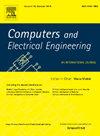基于神经结构搜索和协调注意的分心驾驶检测轻量级模型
IF 4.9
3区 计算机科学
Q1 COMPUTER SCIENCE, HARDWARE & ARCHITECTURE
引用次数: 0
摘要
研究表明,司机分心是大多数事故的主要原因。分心驾驶识别任务可以使用深度学习来建模,轻量级深度学习模型已经被广泛研究用于该任务。在本研究中,我们基于分心驾驶识别任务的特点,将神经结构搜索和坐标注意机制(CA)相结合,设计了一种新的轻量级网络。对设计的神经结构搜索空间进行搜索,找到最适合识别分心驾驶行为的网络。该模型与CA相结合,形成了一个专门为分心驾驶员识别设计的新型轻量级框架,称为CondConv坐标注意力网络(CCNET)。在AUC分心驾驶员检测和State Farm分心驾驶员检测两个公共数据集上进行了实验评估。CCNET对AUC的准确率为95.52%,而对State Farm的准确率为99.8% ~ 99.9%。为了模拟真实的驾驶场景,该模型被部署在嵌入式设备(Nvidia Jetson Nano B01)上,实现了54帧/秒的真实处理速度,并实现了实时处理。这些实验结果表明,CCNET的性能优于以往大多数轻量化模型。值得注意的是,CCNET模型只有170万个参数和高效的推理速度,使其比以前大多数轻量级模型更小、更快。本文章由计算机程序翻译,如有差异,请以英文原文为准。
A lightweight model for distracted driver detection based on neural architecture search and coordinate attention
Research indicates that driver distraction is a leading cause of most accidents. The distracted driver recognition task can be modeled using deep learning, and the lightweight deep learning model has been extensively studied for this task. In this study, we designed a novel lightweight network by combining a neural architecture search and the coordinate attention mechanism (CA) based on the characteristics of the distracted driver recognition task. The designed neural architecture searching space was searched to find the most suitable network for recognizing distracted driver behaviors. This model, combined with CA, forms a new lightweight framework specifically designed for distracted driver recognition, called CondConv coordinate attention network (CCNET). Experimental evaluations were conducted on two public datasets: AUC distracted driver and State Farm distracted driver detection. The accuracy of CCNET for AUC was 95.52%, whereas it ranged from 99.8% to 99.9% for the State Farm. To simulate real driving scenarios, the model was deployed on an embedded device (Nvidia Jetson Nano B01), achieving a real processing speed of 54 frames per second and enabling real-time processing. These experimental results indicate that the performance of CCNET is superior to that of most previous lightweight models. Notably, the CCNET model has only 1.7 million parameters and an efficient inference speed, making it smaller and faster than most previous lightweight models.
求助全文
通过发布文献求助,成功后即可免费获取论文全文。
去求助
来源期刊

Computers & Electrical Engineering
工程技术-工程:电子与电气
CiteScore
9.20
自引率
7.00%
发文量
661
审稿时长
47 days
期刊介绍:
The impact of computers has nowhere been more revolutionary than in electrical engineering. The design, analysis, and operation of electrical and electronic systems are now dominated by computers, a transformation that has been motivated by the natural ease of interface between computers and electrical systems, and the promise of spectacular improvements in speed and efficiency.
Published since 1973, Computers & Electrical Engineering provides rapid publication of topical research into the integration of computer technology and computational techniques with electrical and electronic systems. The journal publishes papers featuring novel implementations of computers and computational techniques in areas like signal and image processing, high-performance computing, parallel processing, and communications. Special attention will be paid to papers describing innovative architectures, algorithms, and software tools.
 求助内容:
求助内容: 应助结果提醒方式:
应助结果提醒方式:


